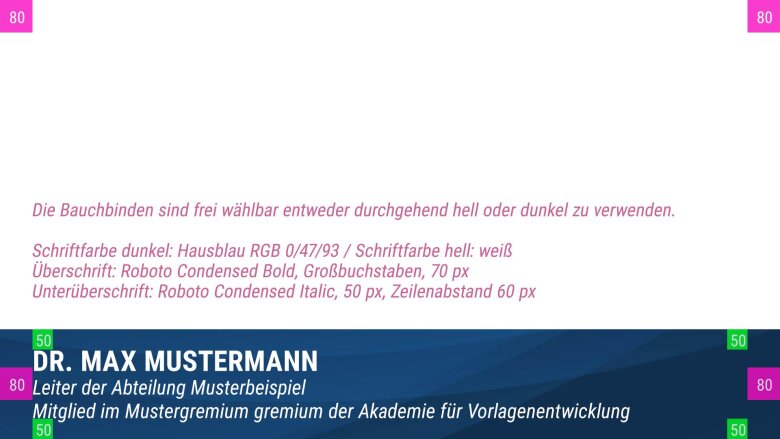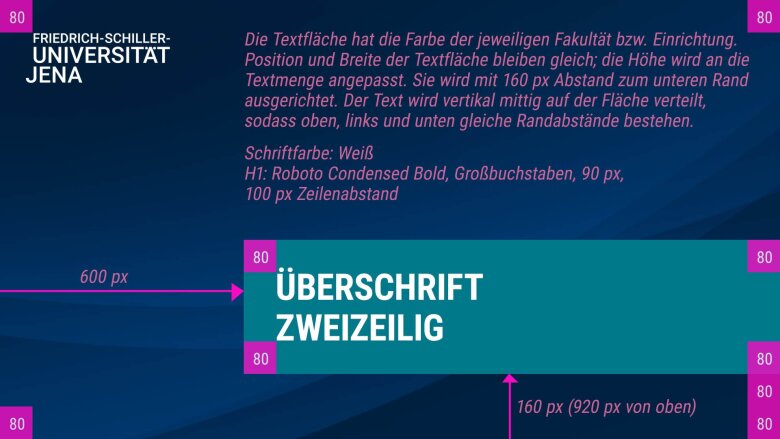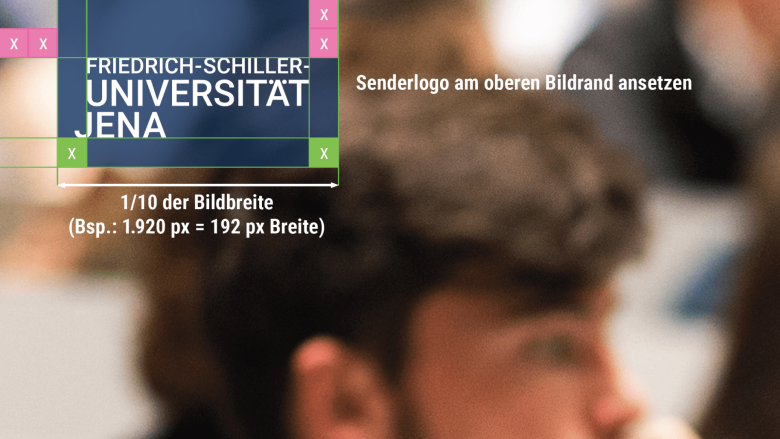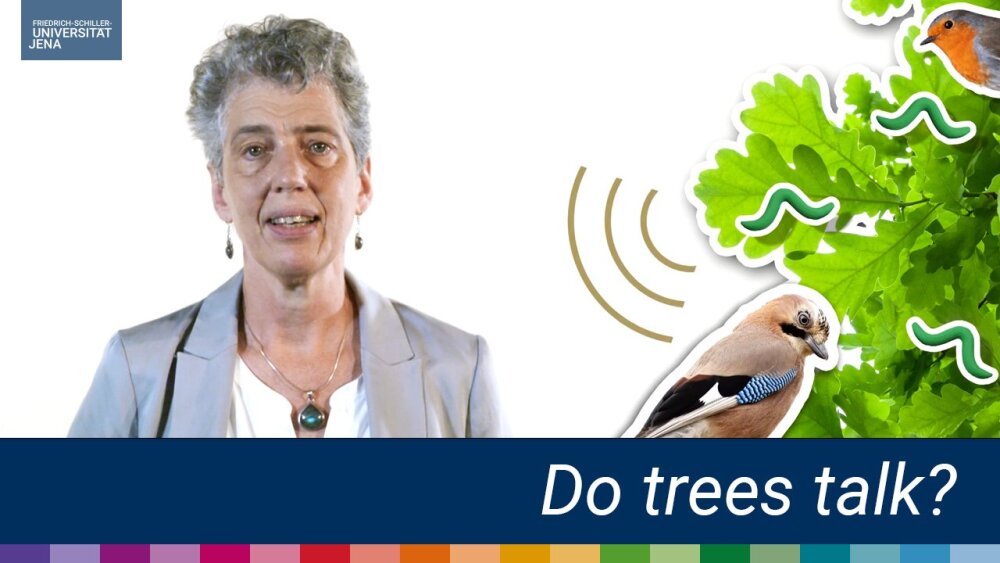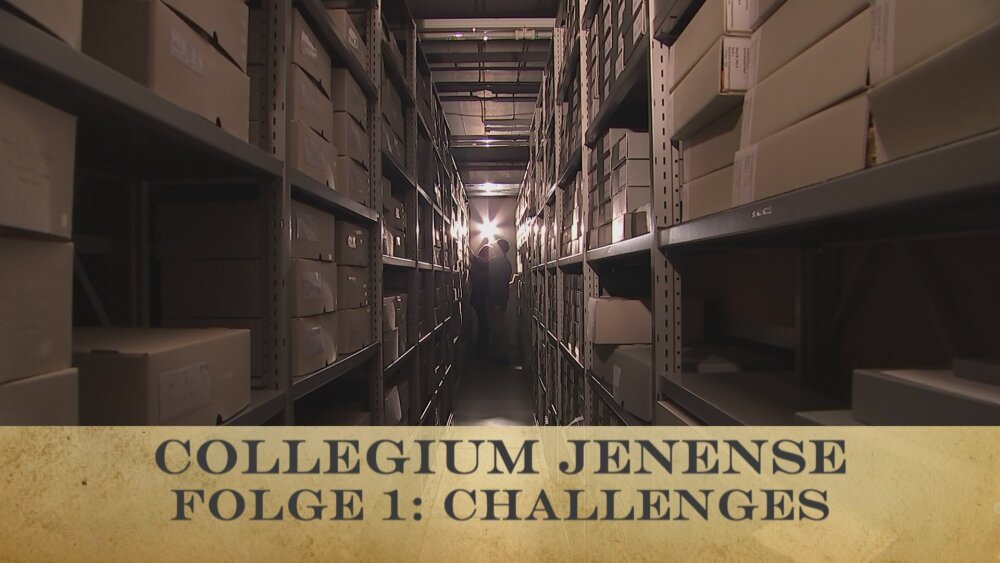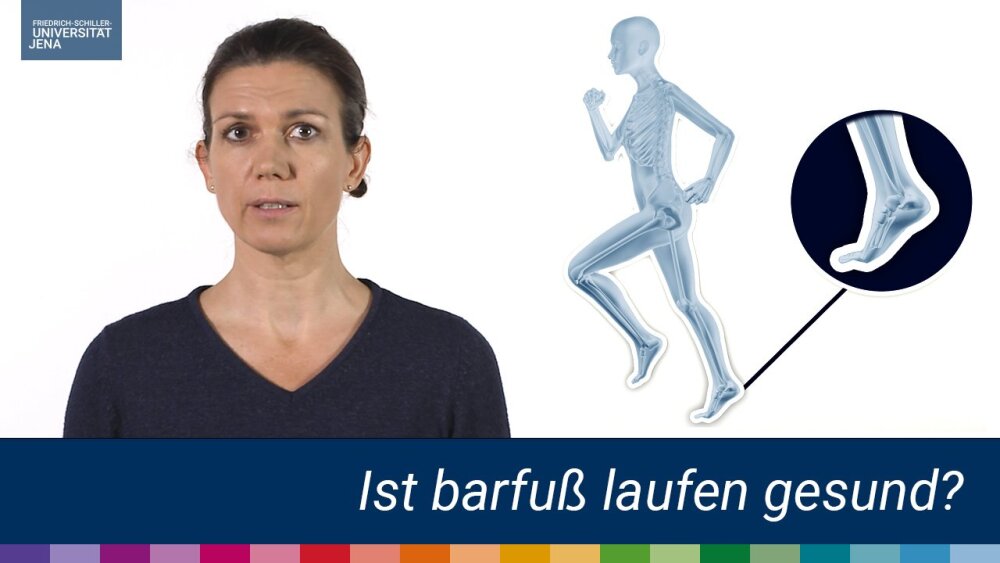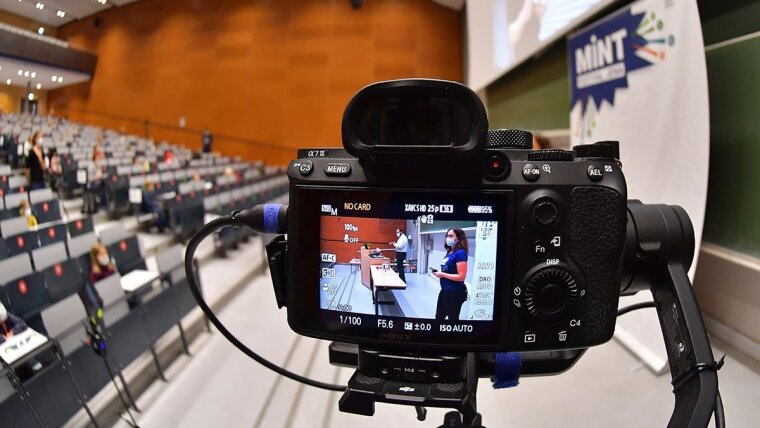
Film and video productions offer the opportunity to convey complex content in a clear, modern and entertaining way. Do you want to present a research project or apply for a degree programme? Audiovisual media have become an integral part of science, research and university communication. The Friedrich Schiller University Jena would like to support you in your film productions and therefore draws attention to important standards for audiovisual formats of the University of Jena at this point for a successful, holistic communication.
We support you with your film project and would like you to create a service desk ticketExternal linkde. Your request will be processed by the colleagues in charge, who will then get in touch with you as soon as possible.
-
Belly bands
Vorlage für die Verwendung einer Bauchbinde in Filmproduktionen der Universität Jena.
Graphic: Susanne BukatzBelly bands categorise the speakers and indicate who they are and under what responsibility they are currently speaking.
The templates are available in house blue and white in single-line and three-line form. You can use them both animated and non-animated.Tip: For longer film formats, repeat the belly bands if necessary, as viewers may have forgotten the name of the person speaking. The subline can vary in terms of content.
-
Filming authorisation
If you would like to photograph or film at the University of Jena, please contact us by e-mail to presse@uni-jena.de. Please let us know the exact location (building, room, laboratory, etc.) and the period of the desired photo/filming work. Please also provide information about the intended use (publication/medium, broadcast date) of the recordings.
-
Colour design
The colours are based on our colour system, consisting of the house colour dark blue (house blue RGB 0, 47, 93 and the award colour gold RGB 174, 154, 99) and, if applicable, the respective colour values of the faculties. White and light grey are available as supporting colours.
-
Intro and outro
Vorlage für die Verwendung eines Intros in Filmproduktionen der Universität Jena.
Graphic: Susanne BukatzAn intro can have an introductory character and classify the theme of a film and is sometimes placed at the beginning for better orientation.
An outro can list the credits at the end of the film: Who worked on it, what the title is and what year the production is from. An acknowledgement could also be placed here.Tip: For social media such as YouTube, an intro and an outro often make little sense because the target group wants to get straight into the topic and the bounce rate after the end of the film is often very high.
-
Fonts
Please use our house fonts "Roboto" and "Roboto Condensed". Regular, Italic and Bold typefaces are mainly used in video productions. You will find our recommendations displayed in the templates.
-
Transmitter logo
Genaue und detailierte Beschreibung der Verwendung des Senderlogos.
Screenshot: Christoph Worsch (University of Jena)To emphasise the affiliation to the university, the university's word mark is used in a fixed form, size and position. The logo displayed in this way also serves as copy protection for your project.
For moving image content, we use the word mark without a seal as the logo so that it always remains clearly recognisable regardless of the display size and resolution.
Tip: Fade in the logo at the beginning with a soft aperture – this corresponds best to viewing habits.
-
Quotation and question board
Universitätshauptgebäude, Room 2.10-2.15
Fürstengraben 1
07743 Jena
Section Multimedia Centre
Carl-Zeiß-Straße 3
07743 Jena
